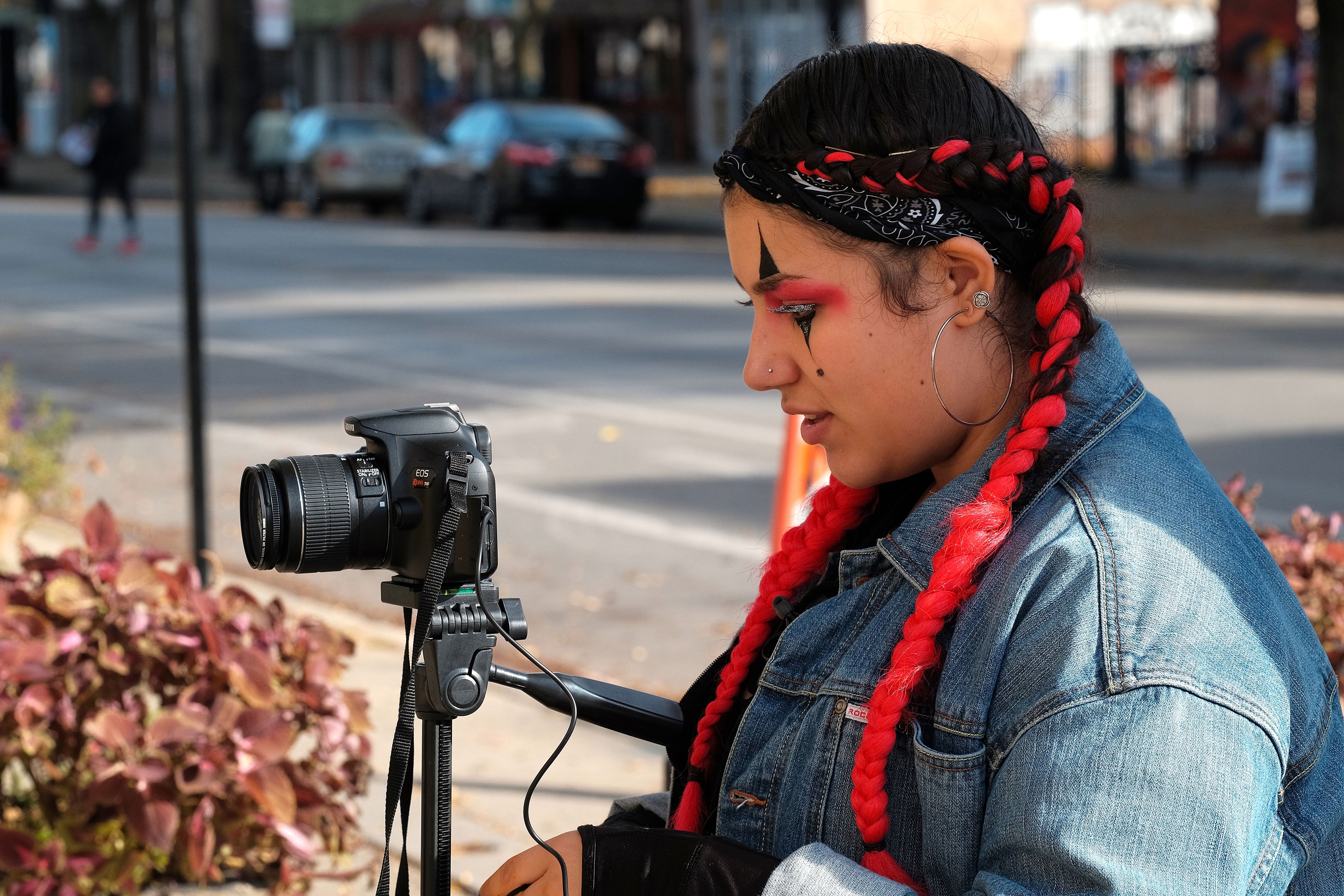Program Profile: Alternative Schools Network Helps Students Prepare for Careers After High School
Instituto Abayarde, part of the Alternative Schools Network 21st CCLC program, serves some 100 students who attend Dr. Pedro Albizu Campos High School. Most of the students who attend the small alternative high school in Chicago’s Humboldt Park neighborhood have had some interruption in their progress toward graduation. Most have been out of school for an average of nine months before enrolling in Albizu. Because many of the students will be 19 or in their early 20s when they graduate high school, the team at Instituto Abayarde afterschool site aims to provide highly relevant programming that will prepare them for postsecondary life.
 |
|
|
Student Xreesol Lopez taking pictures of Halloween revelers at the annual haunted paseo. |
Many of Instituto Abayarde’s activities are closely tied to the high school’s graduation and postsecondary transition goals. For example, all students who attend the high school must complete a senior benchmark portfolio and present it to a panel of community members to graduate. The portfolio includes a resume; a five-year plan demonstrating a career, training, or college trajectory after graduation; letters of recommendation from teachers and counselors; evidence of college training or program application; and a passion project depicting a personal postsecondary career or education pathway. The Instituto Abayarde site supports these goals by providing students with guidance and space to work on their portfolios during 21st CCLC time. In addition, students who participate in the 21st CCLC’s summer programming attend a three-day job-readiness and resume-writing workshop that is provided by staff or Chicago nonprofits such as Erie Neighborhood House or City Year. When they return to school in the fall, students have time to polish their resumes and participate in mock interviews so that they are ready to present their portfolios and showcase their skills in college or the workforce.
 |
|
|
An Institute Abayarde student reviews photographs. |
In addition to aligning afterschool activities with school day goals, the Instituto Abayarde team uses the flexibility of their 21st CCLC to allow students to explore interests and gain career experience. “Afterschool provides space for exploration that the school day cannot do,” says project director Michael Hannan. “During the [school] day, students must be focused on earning credits in the subject areas that are required for graduation: language arts, mathematics, science, social studies, and the arts. Afterschool allows high school students the opportunity to really explore the world of applied skills in a variety of fields.”
Afterschool enrichment activities like photography, robotics, and culinary club are based on student input and interests and are also structured to help students learn important job skills. During photography club, for example, students learn the elements of business management and other job-readiness skills like teamwork, time management, planning, and money management, in addition to learning to take and display photos.
A range of enrichment activities are linked to apprenticeship and internship opportunities. Through a partnership with After School Matters, students have participated in a six-week stipend-based apprenticeship program focused on robotics and basic web design. After School Matters also supported a six-week paid summer internship program where students held a variety of positions in their school and in partner nonprofits in the neighborhood. Another partnership, with Norwegian American Hospital, enabled some students to complete a six-week paid internship, with rotations in departments such as wound care, radiology, hospitality, and information technology (IT).
 |
|
|
One of the photographs taken by Xreesol Lopez during photography club. |
The Instituto Abayarde team sees their career and technical education programming as especially important because Chicago has a high rate of teen and young adult unemployment, which is concentrated in low-income and minority neighborhoods. At the same time, there is demand for trained workers in areas like health care, hospitality, advanced manufacturing, and IT. The 21st CCLC team wants to close this employment gap by fostering a sense of agency among students and helping them prepare for careers instead of jobs. “Our goal is to prepare teens to make informed choices upon graduating high school,” says Hannan. “Some will choose college, others may go straight into wage-earning jobs. Our program should reveal to students that there are pathways to careers after high school that will provide them with wages that are high enough to support themselves and their families in the future.”
To ensure staff are equipped to support the youth in their program, the 21st CCLC has partnered with local colleges and universities to provide professional development to afterschool staff in areas like science, technology, engineering, and math (STEM). To address expressed student interests, the team is also working with the National Restaurant Association to provide training in hospitality and culinary arts. “Finding the right staff is key,” says Hannan. “They do not have to be experts in CTE, but they have to have a passion for helping students find their path and a willingness to learn new skills and content.”
